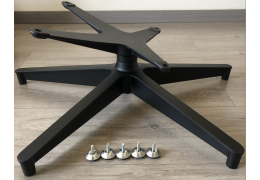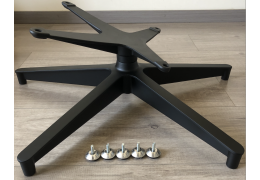Choosing the right replacement parts for your Eames Lounge Chair requires more than just finding a compatible fit....
Understanding Office Chair Components
Understanding Office Chair Components
When it comes to selecting the right office chair, the components that make up the chair play a crucial role in its overall functionality, comfort, and durability. Understanding these essential components is vital for both manufacturers and buyers, as it ensures that you choose high-quality materials and suppliers that meet your specific needs.
What Are the Essential Components of an Office Chair?
An office chair is typically composed of several key components, each serving a unique purpose:
Seat: The seat is where users spend most of their time, making its comfort and design critical. A well-designed seat can significantly enhance productivity and reduce discomfort during long hours of sitting.
Backrest: This component supports the user’s back and is essential for maintaining proper posture. Backrests come in various shapes and sizes, often with adjustable features to cater to different user preferences.
Armrests: Armrests provide support for the arms, helping to alleviate strain on the shoulders and neck. Adjustable armrests can accommodate various user heights and preferences, making them a valuable feature.
Casters: Casters allow the chair to move smoothly across different surfaces. The type of casters (hard or soft) can impact mobility, especially on carpeted versus hard floors.
Base: The base provides stability to the chair. Typically made of metal or plastic, it can have various leg designs, including five-point bases that offer better support and mobility.
Common Materials Used in Office Chair Components
The materials used in office chair components greatly influence the chair's quality, comfort, and durability. Here are some commonly used materials:
Plastic: Lightweight and cost-effective, plastic is often used for seat frames and bases. While it offers versatility, high-quality plastics are essential for ensuring durability.
Metal: Steel and aluminum are popular choices for chair bases and frames due to their strength and longevity. Metal components can provide additional stability, especially for larger chairs.
Wood: Although less common in office chairs, wood can be used in high-end models. It offers a classic aesthetic and is often found in executive chairs.
Fabrics: Various upholstery options are available, including mesh, leather, and synthetic fabrics. Mesh is popular for its breathability, while leather offers a more luxurious feel. When selecting a fabric, consider factors like durability, maintenance, and comfort.
Innovative Technologies in Chair Components
As the office furniture market evolves, manufacturers are incorporating innovative technologies to enhance the user experience. Some notable advancements include:
Adjustable Lumbar Support: Many modern office chairs feature adjustable lumbar support to promote spinal health and comfort. This allows users to customize the support according to their individual back curvature.
Memory Foam Cushions: Memory foam is used in seat cushions to provide superior comfort and support. It conforms to the user's body shape, reducing pressure points and enhancing overall sitting comfort.
Breathable Mesh Fabrics: Mesh chairs have gained popularity for their breathability, allowing air circulation to keep users cool during long working hours. This feature is particularly beneficial in warm environments.
Conclusion
Understanding the essential components of office chairs, the materials used, and the latest innovations is crucial for making informed purchasing decisions. Whether you're a manufacturer looking for reliable suppliers or a buyer seeking comfort and functionality, having this knowledge will ensure you choose the right components that meet your needs.
















Latest comments